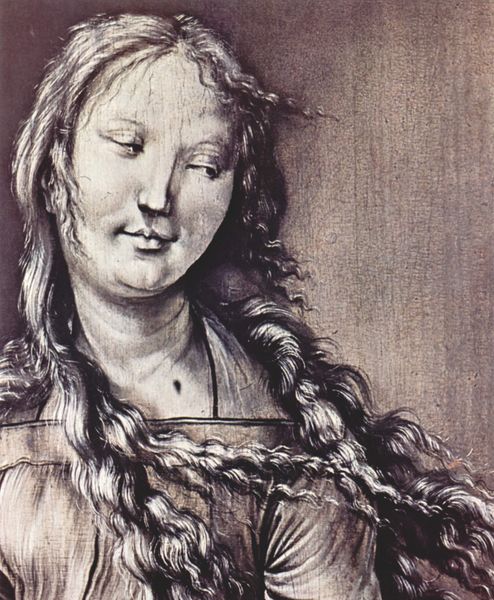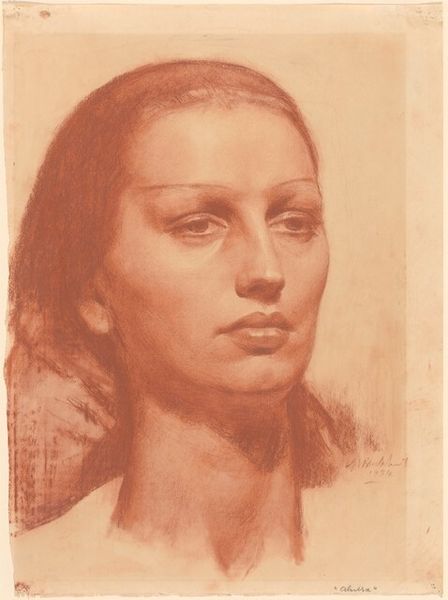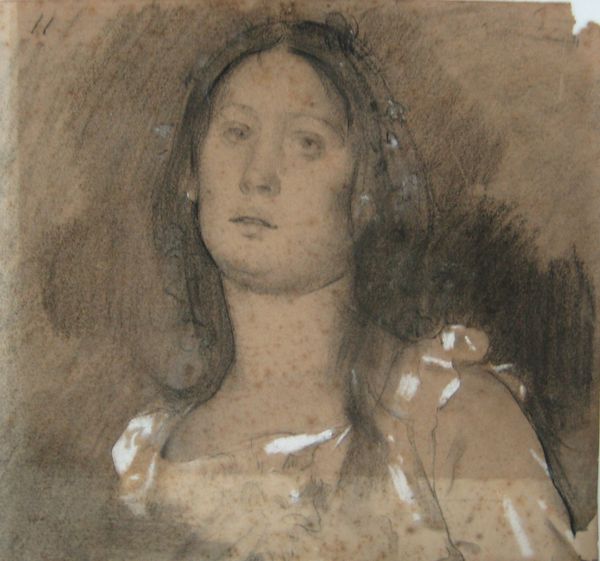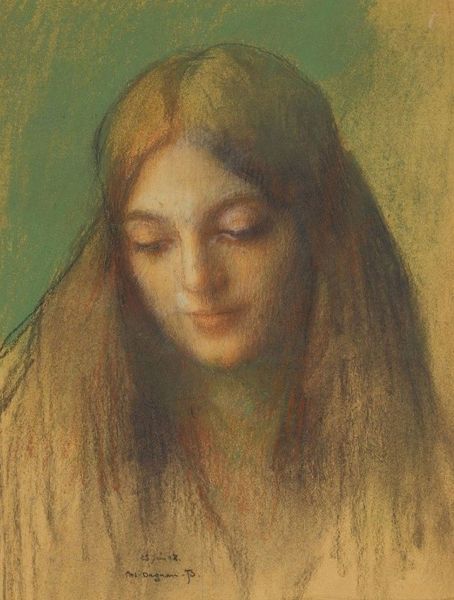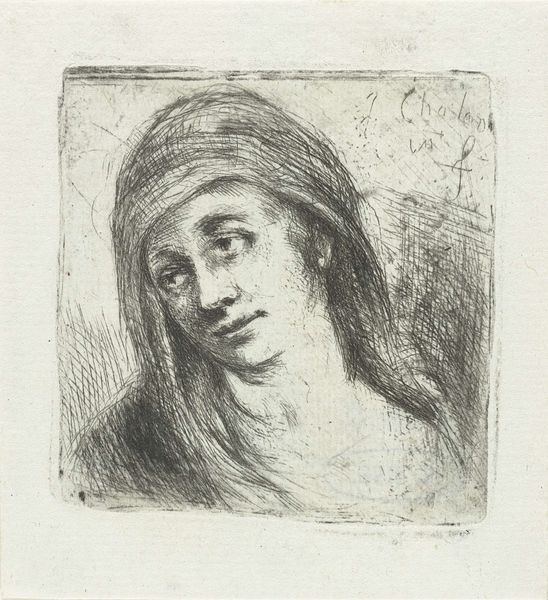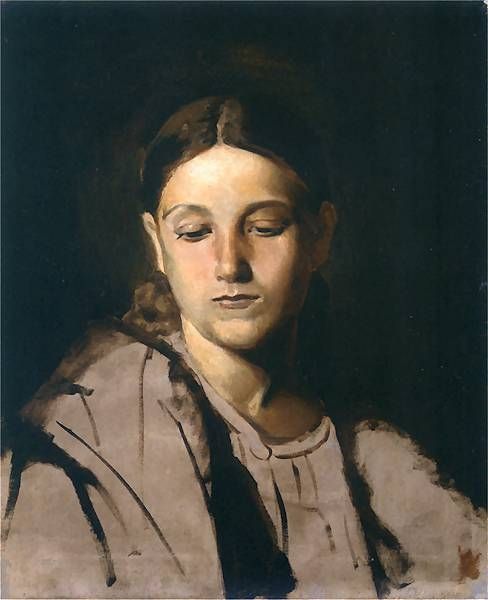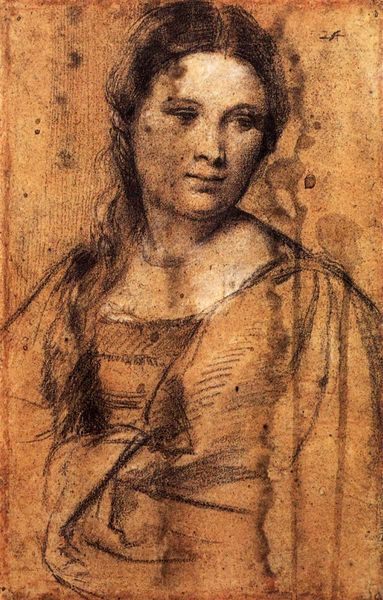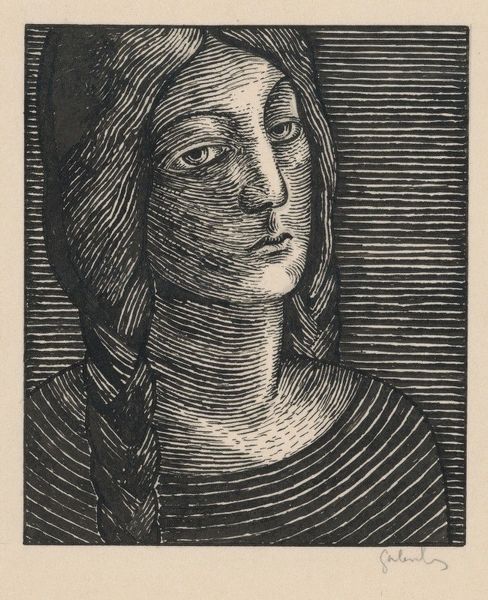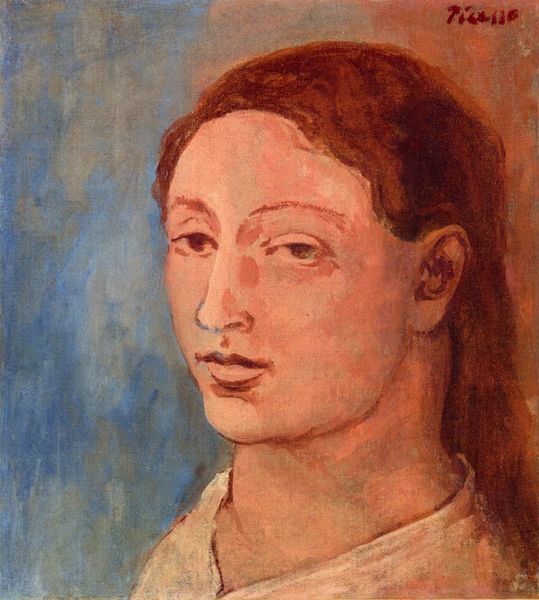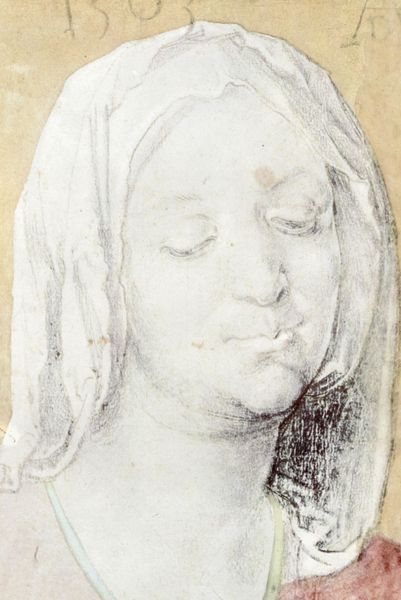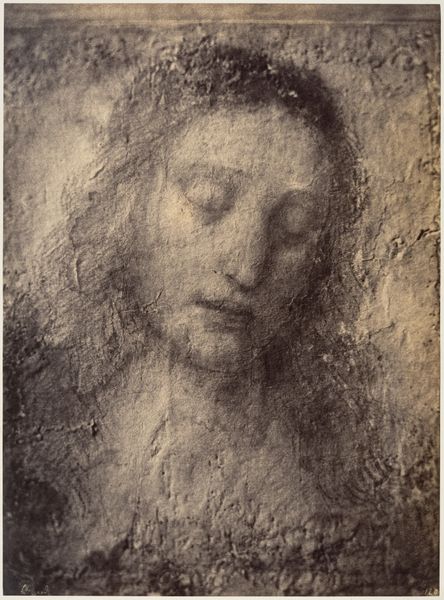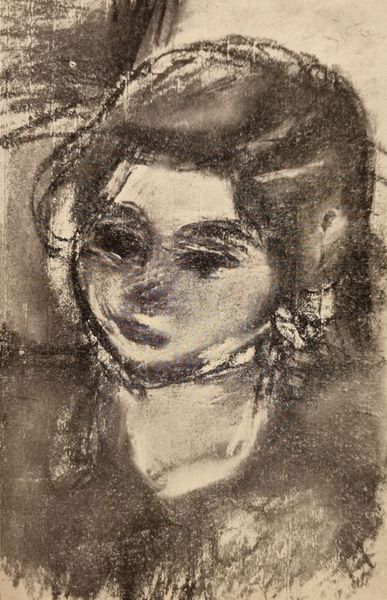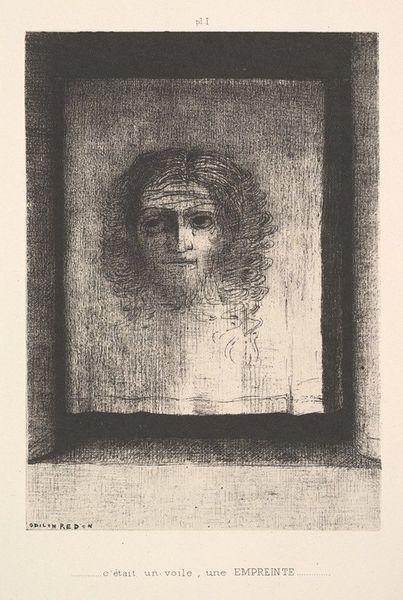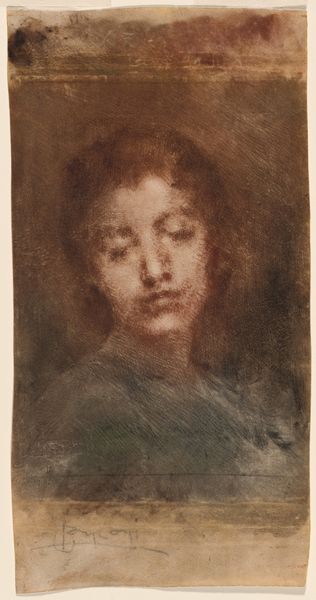
Copyright: Public domain
Curator: This drawing immediately strikes me as somber, almost mournful. The downward gaze and the muted palette evoke a strong sense of melancholy. Editor: Indeed. This is Dante Gabriel Rossetti’s "Portrait of Elizabeth Siddal," created in 1855. The Pre-Raphaelites are known for using innovative techniques, focusing attention on how production and social issues relate to high art. Rossetti employs charcoal, a rather humble medium, to render Elizabeth with incredible delicacy. Curator: It’s a curious choice, charcoal. On the one hand, the directness of the medium—literally burnt wood—speaks to its materiality, its inherent link to labor. But Rossetti elevates it here, using cross-hatching to create such fine detail. I’m particularly drawn to the background's grid, creating visual depth with something so straightforward. Editor: This piece needs to be seen in the context of the Pre-Raphaelite Brotherhood's ideals, right? Rossetti rebelled against the art establishment. I find the focus on Siddal’s image fascinating given their complicated relationship; muse, lover, but also limited access to proper tools because of her gender. She wasn’t fully welcomed into that brotherhood, an important part of his life. Curator: Absolutely, that complex dynamic influences our reception of the image, even now. Consider the artistic labor invested in this drawing, its display, the social dynamics present within and around the making of the artwork, its material existence—this makes the piece far from simple. I would argue it shows respect. Editor: Perhaps. Although the politics of display can be manipulative; look at the location of this artwork at the Ashmolean, it tells me the socio-political standing it acquired over time within British art history, despite the limitations Siddal experienced within her time. We read different layers of meanings through placement and audience reception. Curator: It’s amazing how a simple portrait made from charcoal can prompt such wide-ranging discussion. It underscores the importance of analyzing both the raw materials and its complicated journey through social and cultural spheres. Editor: It reveals that historical examination is really a critical ingredient in how we comprehend art today. These insights provide a broader framework.
Comments
No comments
Be the first to comment and join the conversation on the ultimate creative platform.
